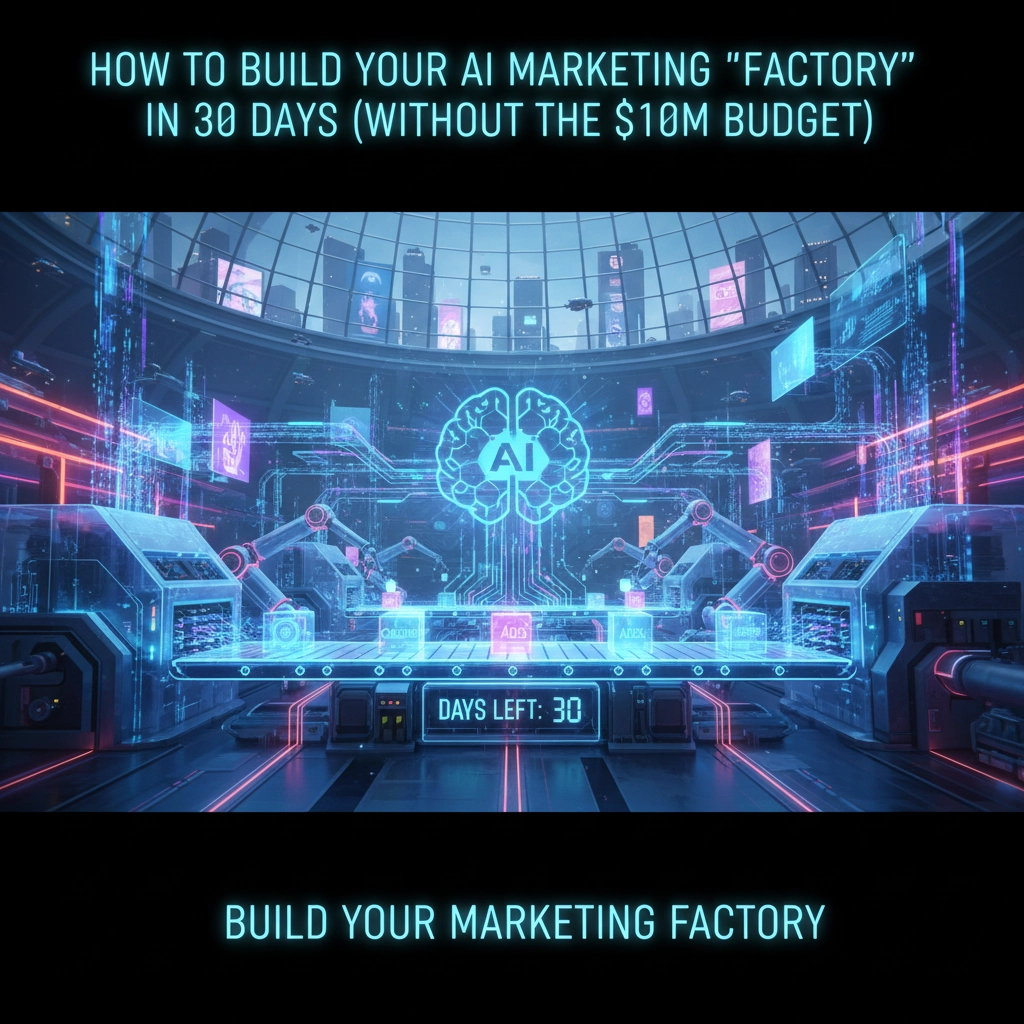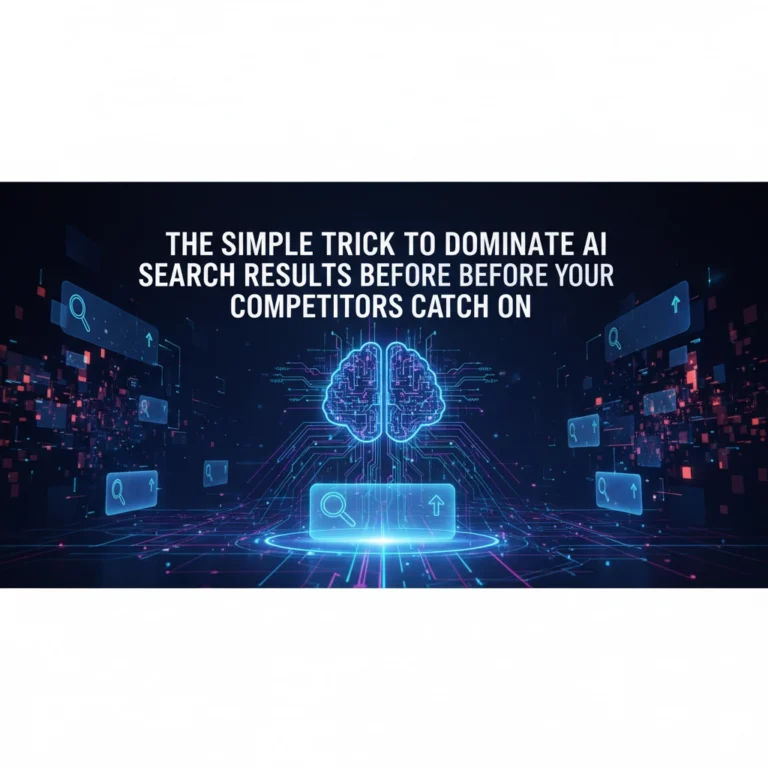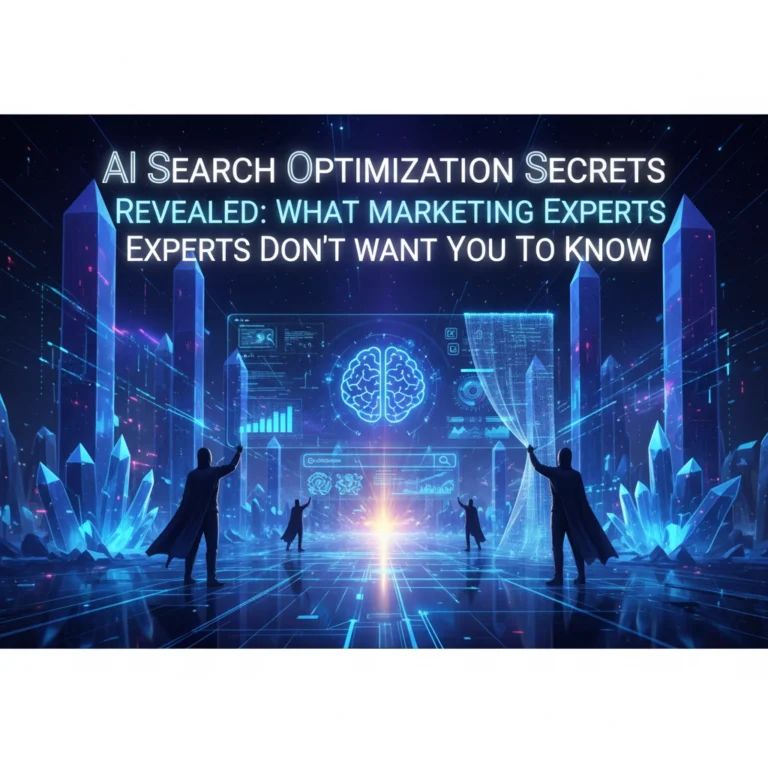How to Build Your AI Marketing "Factory" in 30 Days (Without the $10M Budget)

Forget everything you've heard about needing millions to compete in AI marketing. The truth? You can build a sophisticated AI marketing operation in just 30 days without breaking the bank. The secret isn't throwing money at the problem: it's about working smarter, not harder.
Big agencies want you to believe you need massive budgets and armies of data scientists. But here's what they don't want you to know: the most successful AI marketing "factories" are built by scrappy teams who understand that strategy beats spending every single time.
Week 1: Foundation Phase – Getting Your House in Order
Your AI marketing factory starts with a rock-solid foundation, not fancy tools. During your first week, you need to nail down your niche and structure everything properly.
Pick Your Lane and Own It
The biggest mistake most people make? Trying to be everything to everyone. Instead, focus on one specific industry or use case where AI truly shines. E-commerce brands struggling with personalization? Perfect. SaaS companies drowning in unqualified leads? Even better.
When you specialize, you can develop deep expertise quickly. You'll understand the specific pain points, speak your clients' language, and deliver solutions that actually move the needle. Plus, specialization makes your marketing way more effective: you're not shouting into the void anymore.
Set Up Shop the Right Way
Get your legal structure sorted, create your online presence, and define your service packages. This isn't the glamorous part, but it's essential. You can't scale what isn't properly structured from day one.

Week 2: Tool Selection – Smart Shopping, Not Big Spending
Here's where most people go wrong: they think they need to build everything from scratch. Wrong. The smartest operators leverage pre-built solutions and customize them for their specific needs.
The Pre-Built Advantage
Why spend months building what already exists? Modern AI development cycles have been slashed dramatically. What used to take 6 months can now be done in 4 weeks thanks to pre-tested, ready-to-deploy AI components.
Focus on these core tool categories:
Lead Intelligence Systems: Tools that can instantly evaluate prospects based on behavior, engagement history, and conversion probability. These aren't just nice-to-have anymore: they're table stakes.
Automated Communication Engines: Personalized email sequences, social media responses, and follow-up campaigns that run on autopilot. The key is personalization at scale, not mass broadcasting.
Content Generation Platforms: AI writing assistants for creating first drafts, social media content, and campaign variations. Don't expect perfection, but do expect speed and consistency.
Competitive Intelligence Tools: Automated monitoring of competitor activities, pricing changes, and market movements. Knowledge is power, and automated knowledge is sustainable competitive advantage.
The investment in pre-trained, industry-specific models can save you 3X compared to building from scratch. Smart money follows smart strategies.
Week 3: Implementation Phase – Where the Magic Happens
Now comes the fun part: actually deploying your systems. But here's the crucial part: start with your highest-impact processes first.
Lead Qualification on Steroids
Begin with automating lead qualification and follow-ups. This is where you'll see immediate results. Companies implementing AI-powered sales assistants have seen 40% faster lead qualification while saving each sales rep 15 hours per week.
Think about it: your sales team spends hours each week sorting through leads, researching prospects, and crafting personalized outreach. AI can handle the sorting and research in seconds, leaving your humans to focus on actual selling.
Content Creation at Scale
Stop creating content the old way: one piece at a time, manually crafting every variation. Instead, use AI to generate multiple messaging variations for A/B testing. Create personalized sales materials for different buyer personas. Generate channel-specific content variations instead of recycling the same message everywhere.

Campaign Management That Actually Works
Deploy sentiment analysis tools that can predict customer reactions before campaigns launch. Set up automated alert systems that catch problems before they become disasters. Implement dynamic content optimization that automatically adjusts messaging based on performance data.
The goal isn't to replace human creativity: it's to amplify it. Let AI handle the repetitive, data-heavy tasks so your team can focus on strategy and relationship building.
Week 4: Optimization and Scale
Your final week is about creating systems that improve themselves. This is where AI really shines: machine learning capabilities that refine lead-scoring models, predict customer behavior, and optimize campaigns automatically.
Self-Improving Systems
Implement automated win/loss analysis that identifies patterns in successful deals. Deploy predictive churn identification that flags at-risk customers before they leave. Set up performance tracking that provides content insights and recommendations for future campaigns.
The beauty of well-designed AI systems is that they get better over time. Your lead scoring becomes more accurate. Your content recommendations become more relevant. Your campaign timing becomes more precise.
Automated Reporting That Actually Helps
Create reporting systems that deliver stakeholder updates without manual intervention. But here's the key: don't just report data, provide insights. Your AI should be telling you what happened, why it happened, and what to do next.
The Budget-Smart Scaling Strategy
Here's how to scale without the massive budget: focus on incremental improvements that compound over time. Small businesses are actually perfect targets because they can see dramatic results quickly: like 25% sales growth in 6 months.
Start Small, Think Big
Test your AI-driven solutions on smaller clients first. Optimize your processes, refine your offerings, and build case studies. Then scale to larger clients with proven systems and documented results.
Consider offering specialized AI-powered tools that solve specific problems: chatbots for customer service, recommendation engines for e-commerce, or automated lead nurturing for B2B companies. These can be developed quickly and provide immediate value.

The Reality Check
Building an AI marketing factory in 30 days isn't about having the biggest budget: it's about having the smartest strategy. Focus on pre-built solutions, proven use cases, and high-impact automation that scales efficiently.
The companies winning with AI aren't necessarily spending the most money. They're the ones who understand that AI is a force multiplier, not a magic wand. They're building systems that work consistently, improve continuously, and deliver measurable results.
Your 30-day AI marketing factory doesn't need to compete with the big players on budget: it just needs to beat them on execution, focus, and results. And that's something you can absolutely do in the next month.
The question isn't whether you can afford to build an AI marketing factory. The real question is: can you afford not to? Your competitors are already getting started. The only question is whether you'll join them or get left behind.
Ready to build your AI marketing factory? The next 30 days could change everything about how you approach marketing. The tools are available, the strategies are proven, and the opportunity is massive. What are you waiting for?






